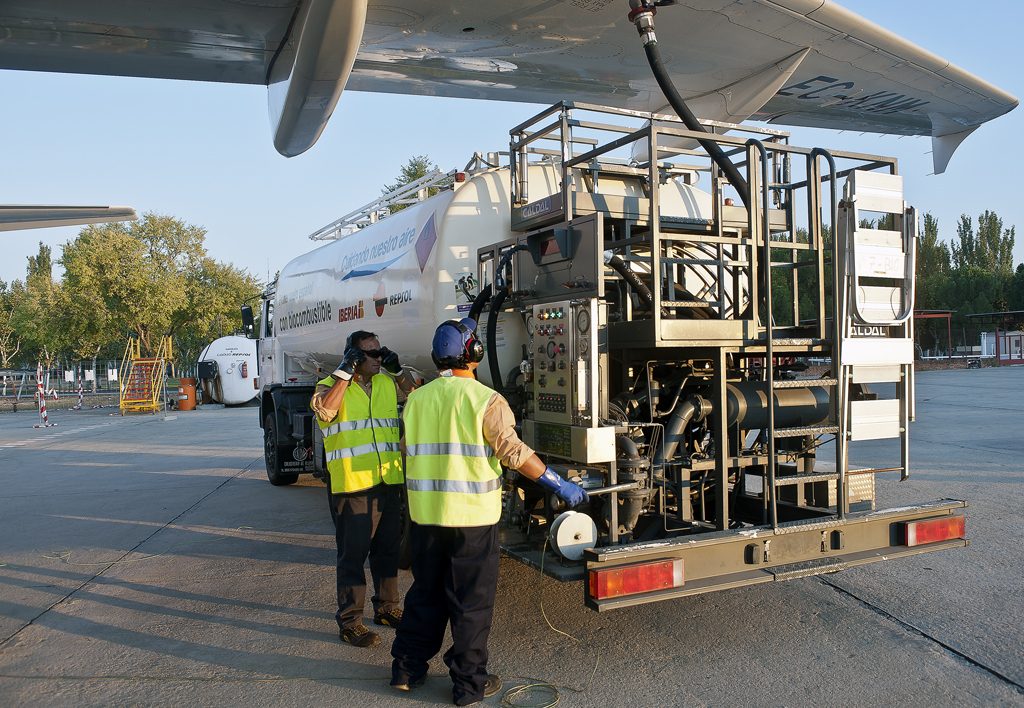Biofuels are biomass-derived fuels from plants, animals, or waste; depending on which type of biomass is used, they could lower CO2 emissions by 20–98% compared to conventional jet fuel.[4] The first test flight using blended biofuel was in 2008, and in 2011, blended fuels with 50% biofuels were allowed on commercial flights. In 2023 SAF production was 600 million liters, representing 0.2% of global jet fuel use.[5]
Aviation biofuel can be produced from plant or animal sources such as Jatropha, algae, tallows, waste oils, palm oil, Babassu, and Camelina (bio-SPK); from solid biomass using pyrolysis processed with a Fischer–Tropsch process (FT-SPK); with an alcohol-to-jet (ATJ) process from waste fermentation; or from synthetic biology through a solar reactor.
SAF technology faces significant challenges due to feedstock constraints. The oils and fats known as hydrotreated esters and fatty acids (Hefa), crucial for SAF production, are in limited supply as demand increases. Although advanced e-fuels technology, which combines waste CO2 with clean hydrogen, presents a promising solution, it is still under development and comes with high costs. To overcome these issues, SAF developers are exploring more readily available feedstocks such as woody biomass and agricultural and municipal waste, aiming to produce lower-carbon jet fuel more sustainably and efficiently.[7]



This is greenwashing. Global aviation uses almost 100 billion gallons of fuel per year. If we even began to address a fraction of that with magic new fuels (which won’t happen) it would require incredible amounts of growing, and if we had that sort of amount of agricultural capacity available on this planet, capable of producing crops at a price the aviation industry is prepared to pay, we wouldn’t have any hunger on the world.
Don’t fall for this. There isn’t such a thing as green aviation. I’m not saying there should be no flying, but we can’t carry on as we are and magic away the consequences. In particular, don’t fall for the snake oil salesmen trying to distract you with appealing non-solutions
Hunger isn’t a production problem, it’s a logistics problem.
We could feed everyone on the planet… it’s just not profitable to.
Hunger is a political problem. We have the ability to deliver food to every person in the world.
We choose not to.
… because those in charge (i.e. producers, companies) feels it’s not profitable enough.
Who do you think “we” is in the equation? Do you think the average person wakes up in the morning and thinks to themselves “Should I feed the world today? Naaaahhh…”
The food waste the US creates could feed our food insecure people 7 meals a day.
Absolutely. I did the math on it. I was really, really generous with the parameters. Still, we would have to turn each and every bit of arable land into rapeseed fields - every corn field, every garden, every meadow, every park, every bit of forest - every year! And it would still not be enough to produce the amount needed by the airlines in this country.
Indeed, greenwashing. Flying with bio fuel is just a toy, with no relation to reality.
I think this can take a lot of waste products. Granted we use a lot of waste products to feed livestock, not sure the overlap.
The solution isn’t complicated either: sail boats and trains